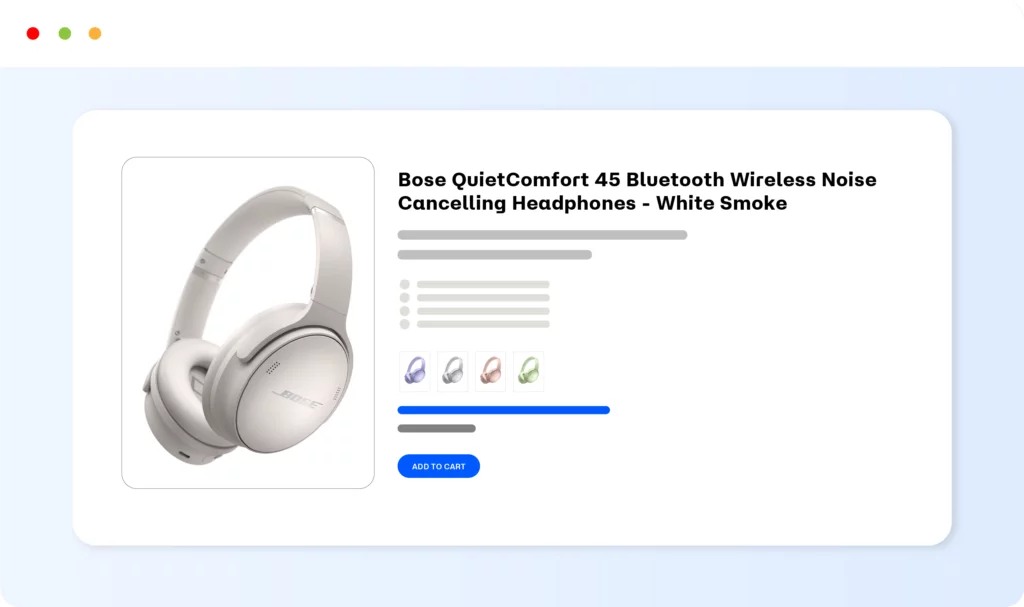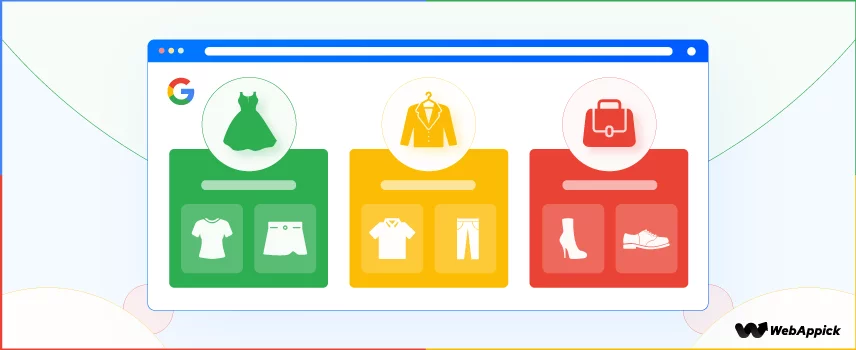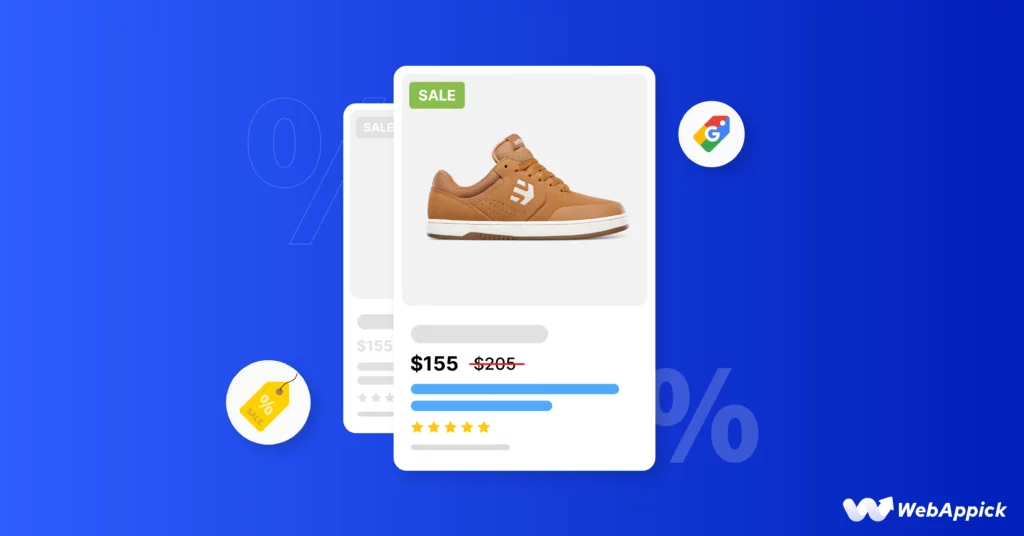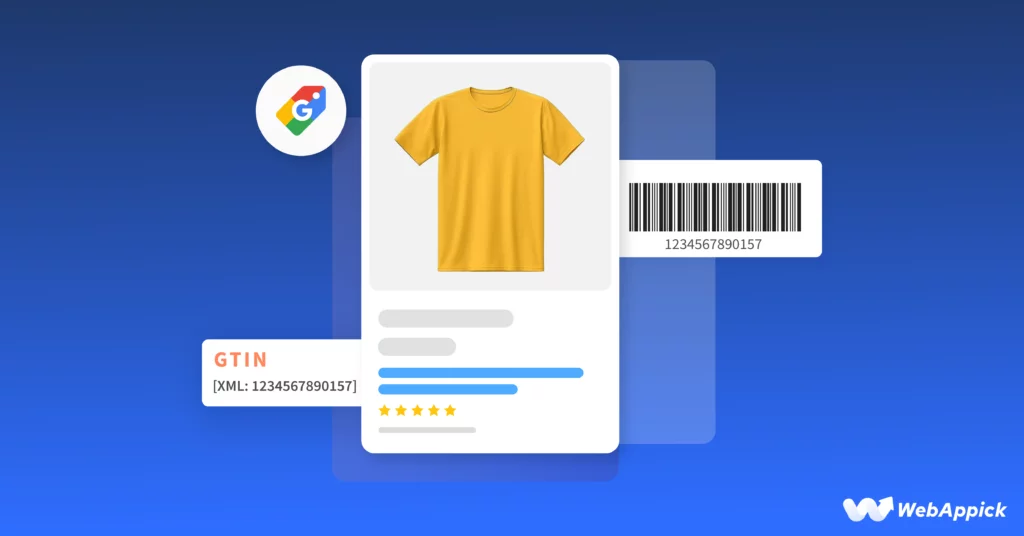
How to Set Up Google Merchant Center Account for WooCommerce
Did you know? There are a total of 1.2 billion searches on Google Shopping every single month!
A top-notch Google Merchant Center account is necessary to run a successful Google Shopping campaign for these searches.
A properly organized Google Merchant Center is as important as managing your product feed. If you focus and take your time to manage Google Merchant, then you will succeed. If you get messy while organizing, you will lose money.
Why, you ask?
Well, Google Merchant Center gives out info about products using a product feed. Then Google Ads uses this information to set up and handle shopping campaigns, so it can show the right product ads to people.
So, how to set up Google Merchant Center?
To help you start your journey with Google Merchant Center, we will guide you on how to set up a Google Merchant Center account for WooCommerce. From creating an account to optimizing Google shopping product feed you will get everything you need to know regarding your GMC account. So, let’s get started.
What is Google Merchant Center?
Google has the unique algorithm of all other search engines, but still, it cannot read minds. But why?
Google is not aware of your WooCommerce products by default. You have to provide your product information to Google, and that is where Google Merchant Center or Google Merchant Center Next comes in.
Now then, What’s Google Merchant Center Next? What’s the difference between Google Merchant Center and this Google Merchant Center Next?
Well, Merchant Center Next is a newer version of Google Merchant Center. It’s simpler and cleaner, making it easier to use, with some new features added. You will be glad to know that the update is expected to launch in the first half of 2024.
You will need a Google Merchant Center account to provide the product information to Google. On Google Merchant Center, you can upload your product information such as product name, price, description, etc.
Google then uses your product information from Google Merchant Center to show Ads. Google also shows your product information on Google search results. So I hope you got a clear idea about Google Merchant Center and how it operates.
5 Key Benefits of Using Google Merchant Center
The benefits of Google Merchant Center are countless for eCommerce business owners. It can boost your eCommerce sales and traffic in many ways. Other than that, there are plenty of benefits as well. Now let’s discuss the benefits of the Google Merchant Center below.
1. Grow your Business
Google Merchant Center enables you to manage how your online store’s product appears on Google. Online, and especially Google, is flooded with customers looking for products.
A merchant center can help you get a notable number of customers to buy your products from your store. It can increase the customer satisfaction of your store to a certain point.
So, Google Merchant Centre is one of the best channels to grow your business substantially.
2. Product Promotion and Customer reach
Let me guess, is your online store’s traffic stuck or not seeing a growth? Well, with Google’s promotions or ads, your online store and website experience a surge in traffic!
You will be shocked to know that nearly 63% of individuals have clicked on a Google ad at least once in their lives.
The best part is that you have to pay Google only if the customer clicks the ads. So whenever Google represents your product on search results, Shopping, and YouTube, you can expect to increase the amount of customer reach.
3. Performance Insights
The platform provides businesses with valuable insights and analytics. It will allow you to track the performance of your product listings and advertising campaigns. Also, you can track your product performance on Google ads as well.
The insights help businesses understand customer behavior, identify trends, and
make data-driven decisions to optimize their marketing strategies.
4. Drive sales and traffic
Your products are seen by millions of potential customers actively searching for what you offer, boosting your visibility!
Through Google Shopping, millions of potential customers might have an eye on your products.
It is known that Google Shopping ads have proven to boost revenue for businesses of every scale.
You can drive traffic to your store through it if you utilize the platform effectively.
Your sales can get increased progressively and notably through Google Shopping. Many WooCommerce store owners generated more sales than ever via this platform. So, this is one of the major benefits of GMC.
5. Free to Use
GMC is free for businesses to use, offering a cost-effective way to promote products online and drive sales.
There are no upfront costs or subscription fees, making it accessible to businesses of all sizes, from small startups to large enterprises.
So, no matter what type of business you have, you can easily use it. Also, if you use it properly you can grow your business significantly.
Google Merchant Center comes with a lot of benefits.
Create a Google Merchant Center Account (6 Steps)
Now that you know the benefits of Google Merchant Center, you surely want to know more. So now I will move forward to the Google Merchant Center account creation and setup process.
Before we get to the main part. There’s something you should keep in mind.
Number One: You have to use an email account to create a new Google Merchant Center account. So, try to create a Gmail account or use your previous email address. If you have already connected the ad account with an email address, don’t use another email address.
And, Number Two: You will only need to keep track of a single email address to manage your Google Shopping. Once you have the email address, creating an account becomes very simple. Also, the steps are really easy and beginner-friendly.
See for yourself.
Step 1: Signing up on GMC
To create a merchant center account, you need to go to the Google Merchant Center and then click on ‘Sign up for Free’.
Step 2: Add the Required Business Information
In the next step, Google will ask you to provide some business information. It includes different things, like:
- Business name and address
- Your business country
- Contact Details
- Your local time zone
My suggestion would be to take your time and provide these kinds of valuable information accurately.
Step 3: Verifying the Ownership
Now you need to verify the ownership of your website. A lot of people find this step critical. But hey, don’t you worry!
There are a total of 5 ways to verify the ownership of your website. Have a look-
But, how is each method done? Check it out.
| Methods | Functions |
| Business Code | Utilize the code sent to your business email. |
| Ecommerce Platform | Apply the code within your eCommerce platform. |
| HTML Tag or File | Insert the HTML tag into the <head> section of your website’s homepage. |
| Google Tag Manager Implementation | Embed the Tag Manager code into the <head> section of your website’s homepage. |
| Applying Google Analytics | Add the Google Analytics tracking code to the <head> section of your homepage. |
Step 4: Setting up Shipping Information
Now, you need to set up the shipping information for your business. First, you need to select your preferred country. In my case, I have chosen the United States. Then click on ‘Continue’.
On the next page, you would need to select the products that would share the shipping costs.
As you can see, I have selected all products. But you have the option to do it for specific products as well. After selecting it, click on ‘continue’.
It’s time to get to the next one, which is ‘delivery times’. There, you can select the ‘By Carrier’ option to use a delivery partner.
On the other hand, if you want to do everything manually, then go for the second option which is ‘Enter Specific Delivery Times Manually’.
After selecting the desired option, fill up the other information such as address, city, state, code, etc. Then, click on ‘continue’.
In the last one, you need to set up the shipping costs. Select the currency according to the country you had selected previously. As I have selected the United States, I have gone for the USD option.
One more thing! You need to set up shipping costs from any of the following ways-
| Free Shipping | All orders ship for free |
| Paid Shipping | Customers Pay for Shipping |
| Free Shipping over a Certain Amount | Free shipping over a certain amount |
Step 5: Sales Tax Setting Up
Google offers a tax setup suggestion based on your business location. Here, you have the option to let Google calculate the sales tax amount or set it up manually.
Additionally, you can specify whether shipping and handling charges should be subject to taxation. Some people take the help of different tax plugins for tax calculations. You can do it too.
Here’s something I do. I always take advice from a tax advisor before adding this information. Or simply consult with an accountant. I would highly recommend you to do the same.
Step 6: Adding Products in GMC
Your setup is almost done. Now, you just need to add your valuable WooCommerce products to your Google Merchant Center Account.
Here, you have the option to upload products as a whole or one by one. But, I’d always recommend you to choose ‘Add another product source’ if you have multiple products. Why?
Because uploading products one by one can be time-consuming and anyone can make a mistake. So, use a product feed plugin to upload your WooCommerce products to Google Shopping or any other platform. It will always make the job easier for you in many different ways.
Here, you can check out our in-depth article on how to add products to Google Shopping using the best product feed manager CTX Feed plugin.
It will give you a broad idea of using the above three methods; not just that, but you will also learn about connecting your GMC account with Google Ads.
That’s pretty much it for the process of How to Set Up Google Merchant Center. Hope now you will be able to perform a proper Google Merchant account setup.
However, when you use a product feed, you will need to optimize it. So, check the
How to Optimize Your Google Marcent Product Feed
You already have an idea of the importance of the GMC account and product feed. But, optimizing the product feed can make your products stand out and attract more customers. That’s why it is a must.
So, how do you optimize your product feed properly? Let’s have a look.
1. Compelling Product Title

People performing a relevant search will always see the product title at first. Customers identify a product by viewing the title of a product. It is undoubtedly the most prominent product attribute of a feed.
So, I’d always recommend you to invest some time to craft a lucrative title for your product.
Google allows up to 150 characters in the title attribute and gives priority to 70 characters. Put important keywords at the beginning of your title to make it more effective.
Strong Reminder! Using promotional text (offers, shipping, etc.) on title attributes is prohibited by Google. Your title should only focus on product-related details such as color, size, etc.
Include short but precise words that are most important. Make sure that you are including the main keywords in your title. Remember not to stuff keywords on the title.
People are looking for something specific (color, size, material) while searching for a product. If you can make a title with the information your customers are looking for, your product will be sold for sure.
Here are two ideal examples:
- Apple iPhone 13 Pro Max – 512GB – Pacific Blue – Unlocked
- Sony PlayStation 5 Console – DualSense Wireless Controller – 825 GB SSD
? Bonus Tip:
Always try your best to keep it under 150 characters. Also, you must include the followings-
- Brand Name
- Specific Feature
- Your Target Keyword
- Color
- Size etc.
You need to learn more about Google Shopping Title Best Practices. Just follow our guidelines on the Ultimate Guide to Google Shopping Title Optimization.
2. Informative and Precise Product Description
Description field contains a description of the product that describes the product details. Customers can get a better understanding of a product by looking at the description.
Google now lets you write up to 5000 characters for product descriptions. But for Google Shopping Ads, Google usually cuts them down to 150–200 characters.
So, what do you do now? Add the key information in the first 150–200 characters.
You should focus on the features and benefits of the product. Do not represent the benefits of buying from your store in the description.
When writing product descriptions, it’s important to know who you’re talking to. Understand your audience’s interests and needs. Keep your descriptions short and easy to read.
Let them know why your product is special and how it can help them. Use simple language to explain its features and benefits.
By doing this, you’ll create descriptions that grab attention and connect with your audience, making them more likely to buy.
? Bonus Tips:
- Highlight your Product’s Benefits
- address customer needs
- showcase its value in the best possible way
3. Specific Product Category

You don’t have to categorize your products, but it’s a smart move to do so. Simply listing your products without any categories might not be the best strategy.
But, Why is it so important?
Well, organizing your products into categories can bring you several benefits.
Firstly, it makes it easier for customers to find what they’re looking for. Imagine you’re shopping online for a specific type of shoe.
Example: If the store has a category for shoes, you can quickly navigate to it and find exactly what you need, rather than scrolling through a long, unorganized list of products.
Secondly, categorizing your products can increase your chances of making multiple sales.
Example: Let’s say a customer is browsing through a category and comes across one of your products. If they like what they see, they might explore other items in the same category and end up buying more from you.
Thirdly, don’t forget about visibility. When your products are neatly organized into categories, they’re easier for customers to find. It can lead to more clicks and ultimately more sales.
So, while it’s not mandatory to categorize your products, doing so can definitely work in your favor.
One more thing! Your chosen Google Product category affects the search result where your products will show up.
Google product category is essential to sort your product and show it on a search query. So, never ignore it and find the relevant categories and subcategories of your products.
Here’s an ideal example: Automotive > Car Parts & Accessories > Tires & Wheels > All-Season Tires
? Bonus Tips:
- The more specific your category is, the more chance your products get eligible. Avoid looking for broader categories and focus on specific categories.
- You can try out different categories to see which one gives the most sales and ROI.
You need to learn more about Google Product Category Taxonomy. Just follow our guidelines on the Google Product Category Taxonomy: The Definitive Guide.
4. Use of Image

Did you know?
Half of online shoppers, around 50% shoppers claim that images played a crucial role in their purchase decisions.
Let’s imagine you’re shopping for a new backpack. Will you spend a lot of time reading a lengthy description? Probably not. Most people quickly scan the title, glance at the description, and focus on the backpack’s appearance in the pictures.
The “image_link ” field should include a link to your product image that is high quality. Don’t forget to include the product image without any text or logo.
Try to make sure your product stands out by keeping the background clean and ensuring the entire product is visible in your image.
You should avoid distracting backgrounds or props that take away from the product. I always use a white background. I’d recommend you to do the same.
The requirements should be like this:
- Non-Apparel Images: Minimum size of 100 x 100 pixels
- Image file size limit: Not exceeding 16MB
- Image size limit: Not exceeding 64 megapixels
- Apparel Images: Minimum size of 250 x 250 pixels
You need to learn more about Google Shopping Image Requirements. Just follow our guidelines on the Google Shopping Ads Image Requirements: The Ultimate Guide.
5. Price

Price attribute informs Google how much you are charging for a particular product. This is the field that customers care about. Mention the selling price and the currency in this field.
The displayed currency should match the country where you are advertising your product. Remember that the product price, condition, and availability should match the information on your website.
Google won’t show or penalize your ads if the information in the feed does not match with your site.
You need to learn more about Google Shopping Sale Price Attribute. Just follow our guidelines on the Ultimate Guide to Google Shopping Sale Price Attribute.
6. Availability
You need to fill availability attribute in Google Shopping which is easy to complete. But, why do you need to?
Well, “Availability” is a key attribute in Google Merchant Center. It shows the customer if a product is in stock or not.
So, you must include it in your product feed to advertise the items on Google Shopping. It tells Google if your products are ready for purchase, ensuring accurate listings.
Pick the value of this field from in stock, out of stock, and preorder. But, which one should you select? See for yourself.
| In stock | You should select it when your product is completely ready to be sold. Not just that, when you’re accepting orders for the products and you’re confident about fulfilling them successfully, select the “in stock” attribute for that product. |
| Out of Stock | Select this one when the product is not available or you are not accepting orders for that particular order. |
| Pre Order | Select it for the products which aren’t released but will be released soon. |
This field should be updated regularly; otherwise, customers might not get the latest information about your products. So, try your best to keep it updated.
7. Condition
You use the condition field to inform potential customers about the condition of the product you’re selling. It will provide you with three options.
| Condition | Description |
| New | Your product is brand new, untouched, and comes sealed in its original packaging, ensuring its pristine condition. |
| Refurbished | Your product has undergone professional restoration to ensure it functions like new, complete with a warranty, although it may not be in its original packaging. |
| Used | Your product has been previously owned or opened, with potential signs of wear or use, making it a cost-effective option for buyers. |
Optimizing this feed will help you to gain specific types of customers. Especially those who are looking for refurbished and used products.
On the other hand, it will also help the customers to get their desired products as well.
Ensuring this value is set correctly is crucial as it helps refine search results and assists customers in making informed purchasing decisions.
8. Global Trade Item Numbers (GTINs)

Google uses GTIN or Global Trade Item Numbers to represent and gather identical products on the Google shopping result page. Some familiar GTINs you will see are mentioned below:
- JAN: GTIN used in Japanese
- ISBN: GTIN used for books
GTIN has a lot of value to offer. But, what are they?
Including GTINs in your online product listings improves sales chances by making products easier to find, enhancing the buying process, and making operations more efficient.
It will increase your chances to show your products to customers who are searching for very specific products.
That is why you should never ignore GTINs. Here are some of my recommendations to make the best use of GTINs-
- Utilize valid GTIN codes. Double-check to ensure that they are correct.
- Make sure that you regularly update the GTIN codes of your products.
- Add GTIN codes to every product. It will help both you and the customers in the long run.
- Maintain consistency across all platforms.
It would be best if you learned more about Google Shopping GTINs. Just follow our guidelines in Google Shopping GTINs: The Ultimate Guide for Sellers.
9. MPN
MPNs or Manufacturer Part Numbers are the numbers that the manufacturer creates. These numbers are specific and made for a particular part of a product.
MPNs serve the same purpose that GTN does. To identify your product’s MPN, you can check your suppliers.
A lot of people ignore this one. But hey, MPN can have a direct impact on the performance of your ads and listings.
You need to provide the correct value in this category as well. Also, follow Google’s advice and utilize the Manufacturer Part Number (MPN) provided by the manufacturer. Avoid using self-created values unless you are the manufacturer.
MPN has a significant impact on improving the customer experience as well. So, the best thing would be to optimize it properly.
10. Product ID
Id field essential for each product, and it can be used for your personal reference. This unique number will let you connect the Google data to your store data.
Using any type of system such as SKU, internal reference number, etc., will make your product identifiable. But why should you focus on product ids?
Including a product id for the products is highly recommended as it significantly enhances the performance of product ads and improves your product listings on Google Shopping.
It won’t just enhance the performance, but it will also help you to keep track of the products accurately and reduce different types of errors. Here are some of the best practices to optimize this field-
- Use unique product IDs.
- Ensure consistency and accuracy across all product listings.
- Avoid using special characters or spaces in product IDs.
- Regularly update and maintain product IDs to reflect changes in your inventory.
If you can utilize these methods, your product feed will undoubtedly be optimized properly. And when you ensure accuracy, consistency, and relevance in your GMC account and product data, you can enhance your online presence and attract more customers to your offerings.
Frequently Asked Questions (FAQs):
Answer: Yes, it is. Creating a Merchant Center account and listing your products on Google is completely free.
Answer: To get approved for Google Merchant Center, ensure your products have all necessary attributes and comply with Shopping ads policies.
Answer: The approval process for Google Merchant Center usually takes up to 12 hours, with a maximum duration of 24 hours.
Answer: You need to follow a simple process to add customer support information in GMC.
Check it out-
1. Sign in to the Merchant Center and Go to the “Add customer support info” card on your Home page.
2. Click Add info and provide all the necessary information like customer service email, phone number, URL etc.
3. Now you should Choose your preferred contact method.
4. Save your changes at the bottom of the page.
Conclusion
Hope you got a clear understanding on how to set up google merchant center account. This process is easy and beginner friendly. So read the steps again,take
your time, give the correct information and I believe you will be able to pull it off at one go.
Always, try to make sure that the product feed is optimized properly. It will definitely help you in the long run. That’s it for today. Till then, have a smooth ecommerce journey!
